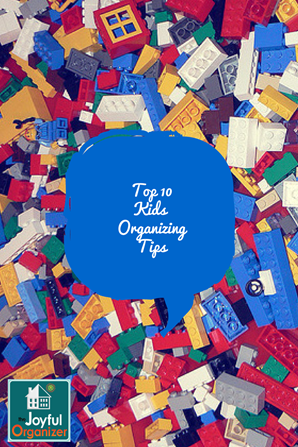“Getting your kids organized is one of the greatest challenges for most
families. However, teaching them early on how to get and stay organized
builds the foundation and skills they will need to be successful in life.
The more responsibility they take on themselves, the easier your life will
be as a parent.
1. Kids can do more chores than you think. Divide their age in half
and that is the number of chores appropriate for them to handle.
2. Determine if you are going to offer a reward for chores completed. Some
families use a chore chart and offer an incentive for a job well done.
However, other families feel that children should help out as part of
the household.
3. If there are chores that no one wants to do, use a fish bowl lottery
system. Write down all of the chores, and drop them in the fish bowl or
suitable alternative. Draw the appropriate number of chores for each
family member, and it is their responsibility to complete the ones they
draw at random. This mixes up the chores every week, and no one is stuck
doing a chore they don’t like for very long.
4. If you want to use chore charts, we have a free printable option on our
website.
5. When you start organizing a kid’s room, the first thing you should do
is get down to their eye level. Seeing what they see can really help you
understand their unique challenges. For example, small kids typically
cannot reach adult height closet rods. Therefore they won’t be able
to access their clothes easily, and will have a hard time putting them
away. Also look for things that are just out of reach and may be
tempting to climb on furniture and gain access.
6. Label everything! If your child is too young to read, have them draw
pictures of the items. This will ensure that they know where things are,
and will ensure that things can go back where they came from.
7. Kids aren’t going to pick up every thing, every day. Give them a place
in their room, or play space to keep items out over night, such as a Lego
castle or a puzzle. However, insist the rest of the room be picked up.
8. Use containers in colors that you child likes. This will increase
their likelihood of using them. Also, for younger children, use soft-sided
containers in case they trip and fall onto them.
9. If you child has a ton of collections, like rocks, shells, or coins,
purchase jars and small shelves. Put the collection into the jars and then
onto the shelves. They actually create a cute display, and your child can
enjoy them all of the time.
10. Children are often reluctant to let go of toys and clothing. When
asking your child to make some donations, don’t just ask them what they
want to get rid of. Explain that the toys that they no longer use are
going to help another boy or girl that may not have toys of their own to
play with. Rather than making the donation open ended, give them a
container, such as a laundry basket, and ask them to fill it. They
won’t feel as though they have to donate all of their toys, and it will go
much quicker and easier for all parties involved.” (Bonnie from The Joyful Organizer)
If you would like to learn more please visit www.thejoyfulorganizer.com
The Joyful Organizer gets Bragging Rights!






